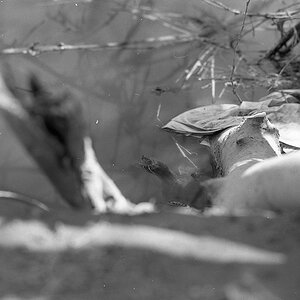BadRotation
TPF Noob!
I developed a couple rolls of film tonight, and while I have done about 30 rolls total since I got into film (I grew up with a digital SLR, and have only recently gotten into film), I have never had a problem like this.
I have no clue where I went wrong.
When the negatives are scanned, the long edges are lighter than the middle of the film. I dont know if it was because I screwed up somewhere in development, or if it has something to do with the film being in the camera for a month. Or possibly my chemicals are just old (I think they have a shelf life of 2 months in a sealed container, and I have had them mixed for three)
The effect is worse on some photos, and not that bad/not noticeable on others.
Here is a couple samples... The long edges are a bit lighter than the rest of the film.


I have no clue where I went wrong.
When the negatives are scanned, the long edges are lighter than the middle of the film. I dont know if it was because I screwed up somewhere in development, or if it has something to do with the film being in the camera for a month. Or possibly my chemicals are just old (I think they have a shelf life of 2 months in a sealed container, and I have had them mixed for three)
The effect is worse on some photos, and not that bad/not noticeable on others.
Here is a couple samples... The long edges are a bit lighter than the rest of the film.











![[No title]](/data/xfmg/thumbnail/31/31509-b8abaec96e6e375688e269bc89f47652.jpg?1619734858)




